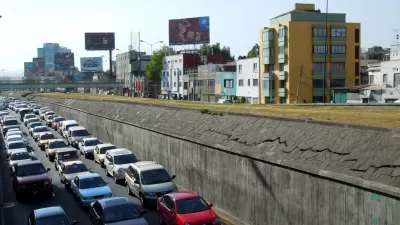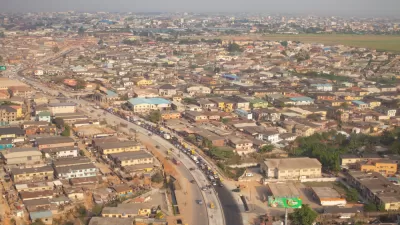Manish Bapna outlines the factors that put China on the frontlines of sustainable urban development.
As Bapna explains, China is no stranger to the woes that plague modern cities. Over half the country's residents are now urban dwellers, facing "poverty, over-crowding, pollution, and congestion" on a scale that dwarfs other cities around the globe. And China has achieved this status in a phenomenally short time: just forty years ago, peasant farmers accounted for a whopping eighty percent of the population.
But China's massive and growing urban population presents a unique opportunity – while most urban growth in the Western world will take place in existing cities (at least for the immediate future), developers in China must build new cities from the ground up just to keep up with demand. It's estimated that by 2030, China will boast 221 cities with over 1 million residents. By comparison, Europe has only 35 such cities today. Thus, "While the idea of smart cities is not new, creating sustainable cities for the booming global population requires scaling up on a whole new level. And there is no better place to start than in China."
The government of China has not failed to recognize this opportunity, and has incorporated several environmental goals for its 12th Five-Year Plan. To accomplish those goals, it will work with the World Resources Institute to develop policies and projects for energy efficiency, sustainable transportation, and clean water.
FULL STORY: China's Population Challenge: Designing Sustainable Cities For The Future

Alabama: Trump Terminates Settlements for Black Communities Harmed By Raw Sewage
Trump deemed the landmark civil rights agreement “illegal DEI and environmental justice policy.”

Study: Maui’s Plan to Convert Vacation Rentals to Long-Term Housing Could Cause Nearly $1 Billion Economic Loss
The plan would reduce visitor accommodation by 25% resulting in 1,900 jobs lost.

Planetizen Federal Action Tracker
A weekly monitor of how Trump’s orders and actions are impacting planners and planning in America.

Wind Energy on the Rise Despite Federal Policy Reversal
The Trump administration is revoking federal support for renewable energy, but demand for new projects continues unabated.

Passengers Flock to Caltrain After Electrification
The new electric trains are running faster and more reliably, leading to strong ridership growth on the Bay Area rail system.

Texas Churches Rally Behind ‘Yes in God’s Back Yard’ Legislation
Religious leaders want the state to reduce zoning regulations to streamline leasing church-owned land to housing developers.
Urban Design for Planners 1: Software Tools
This six-course series explores essential urban design concepts using open source software and equips planners with the tools they need to participate fully in the urban design process.
Planning for Universal Design
Learn the tools for implementing Universal Design in planning regulations.
Caltrans
Smith Gee Studio
Institute for Housing and Urban Development Studies (IHS)
City of Grandview
Harvard GSD Executive Education
Toledo-Lucas County Plan Commissions
Salt Lake City
NYU Wagner Graduate School of Public Service





























